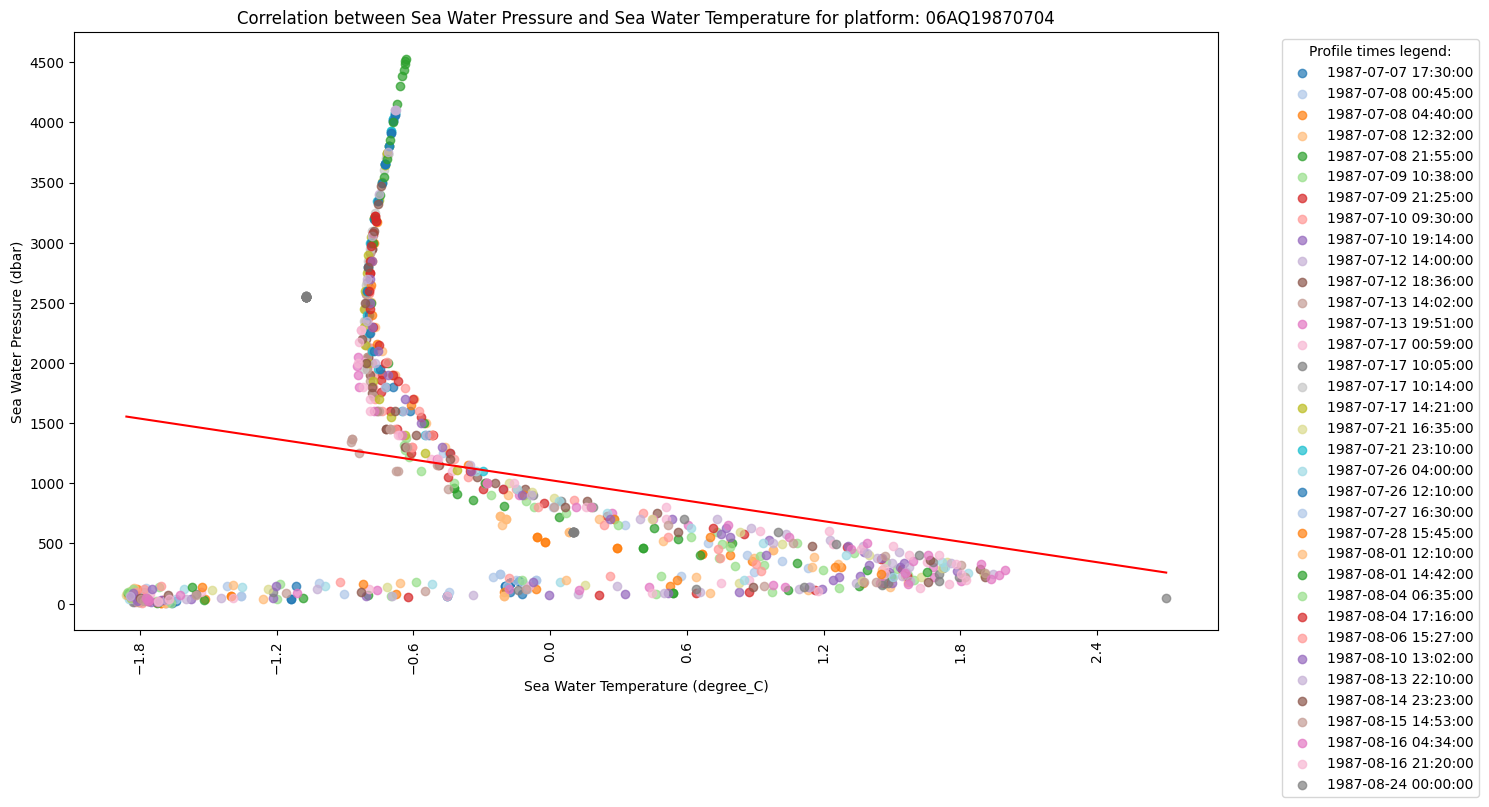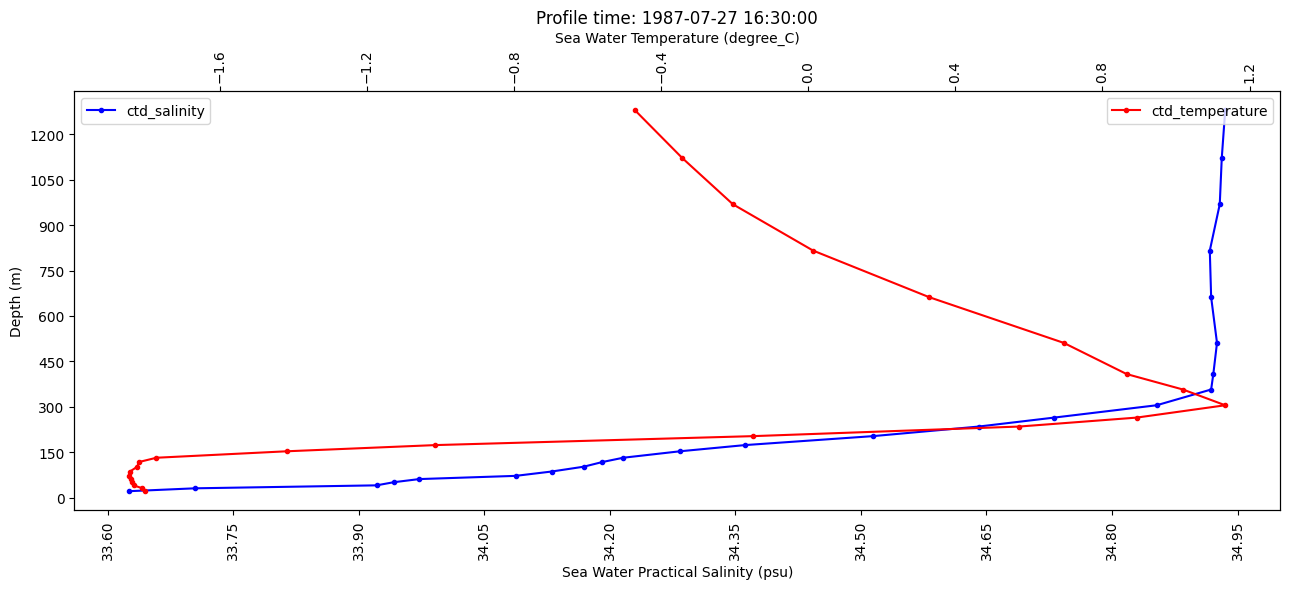Assessing Ocean Circulation, Carbon Uptake, and Environmental Changes#
For an interactive version of this page please visit the Google Colab at the link:
![]() Open in Google Colab
Open in Google Colab
(To open link in new tab press Ctrl + click)
The purpose of this notebook is to show the use of in situ observations as CCHDO Bottle data to assess ocean circulation, carbon uptake and environemntal changes.
CCHDO (CLIVAR and Carbon Hydrographic Data Office) supports oceanographic research by providing access to high quality, global, vessel-based CTD and hydrographic data from GO-SHIP, WOCE, CLIVAR and other repeat hydrography programs. The coast-to-coast, top-to-bottom, reference-quality ocean transects curated by the CCHDO provide a keystone in assessing and understanding the extent and nature of ocean changes. They are used to monitor the ocean storage and transport of heat, freshwater, carbon and nutrients; assess the ocean’s uptake of anthropogenic carbon and heat; monitor changes in ocean oxygen and acidification; and evaluate ocean circulation and ventilation. A principal scientific use of CCHDO data is model initiation, calibration and validation. Further, it provides critical reference data for Argo float calibration and quality control.
The tool uses the following product:
OCEAN:ICE’s ERDDAP’s dataset (https://er1.s4oceanice.eu/erddap/tabledap/CCHDO_Bottle.html)
The first code cell installs and imports into the notebook all the necessary libraries to run the code of the subsequent cells. The second one retrieves a list of platforms from the CCHDO dataset, filtering them by latitude to include only those with latitude less than -55 or latitude greater than 55. It will also store in the notebook’s memory some functions that will be used later. In this webpage the interactive nature of the Colab had to be made static so in this example the platform chosen will be the first in the dataframe resulting from the query.
Show code cell source
BASE_URL_DATASET = 'https://er1.s4oceanice.eu/erddap/tabledap/CCHDO_Bottle'
north_lat_limit = 55
south_lat_limit = -55
coords_padding = 10
def get_platforms():
profile_ids_query_north = f'.csvp?expocode&latitude%3E={north_lat_limit}&distinct()'
profile_ids_query_south = f'.csvp?expocode&latitude%3C={south_lat_limit}&distinct()'
resp_north = requests.get(BASE_URL_DATASET + profile_ids_query_north)
df_north = pd.read_csv(BytesIO(resp_north.content), encoding='utf-8')
resp_south = requests.get(BASE_URL_DATASET + profile_ids_query_south)
df_south = pd.read_csv(BytesIO(resp_south.content), encoding='utf-8')
frames = [df_north, df_south]
df_platforms = pd.concat(frames)
platforms = list(df_platforms['expocode'])
return platforms, df_platforms
def var_name_uom_map():
metadata_url = 'https://er1.s4oceanice.eu/erddap/info/CCHDO_Bottle/index.csv'
resp_metadata = requests.get(metadata_url)
df_metadata = pd.read_csv(BytesIO(resp_metadata.content), header=0, encoding='utf-8')
df_metadata = df_metadata[~df_metadata['Variable Name'].str.contains('_error', na=False)]
df_metadata = df_metadata[~df_metadata['Variable Name'].str.contains('_qc', na=False)]
df_metadata = df_metadata[~df_metadata['Variable Name'].str.contains('_unk', na=False)]
df_metadata = df_metadata[~df_metadata['Variable Name'].str.contains('_68', na=False)]
df_metadata = df_metadata[~df_metadata['Variable Name'].str.contains('ref_', na=False)]
df_metadata = df_metadata[~df_metadata['Variable Name'].str.contains('rev_', na=False)]
df_metadata = df_metadata[~df_metadata['Variable Name'].str.contains('bottle_', na=False)]
df_metadata.reset_index(drop=True, inplace=True)
variable_long_name_map = {}
variable_units_map = {}
current_variable = None
for index, row in df_metadata.iterrows():
if row['Row Type'] == 'variable':
current_variable = row['Variable Name']
variable_long_name_map[current_variable] = current_variable
variable_units_map[current_variable] = ''
elif row['Row Type'] == 'attribute' and current_variable:
if row['Attribute Name'] == 'long_name':
variable_long_name_map[current_variable] = row['Value']
elif row['Attribute Name'] == 'units':
unit = row['Value'] if row['Value'] != 'Unknown' else ''
unit = unit.encode('utf-8').decode('unicode_escape')
variable_units_map[current_variable] = unit
variable_units_map['time'] = ''
variable_units_map['ctd_salinity'] = 'psu'
return variable_long_name_map, variable_units_map
def get_filtered_variable_map(selected_platform, variable_long_name_map, non_valid_vars=None, additional_vars=None):
data_query = f'.csv?&expocode=%22{selected_platform}%22'
resp = requests.get(BASE_URL_DATASET + data_query)
df = pd.read_csv(BytesIO(resp.content), header=0, encoding='utf-8')
df = df.iloc[1:]
df.dropna(axis=1, how='all', inplace=True)
df.dropna(axis=0, how='all', inplace=True)
all_vars = list(df.columns)
filtered_variable_long_name_map = {k: v for k, v in variable_long_name_map.items() if k in all_vars}
if additional_vars:
filtered_variable_long_name_map.update(additional_vars)
for non_valid_var in non_valid_vars:
filtered_variable_long_name_map.pop(non_valid_var, None)
long_name_to_variable_map = {v: k for k, v in filtered_variable_long_name_map.items()}
return filtered_variable_long_name_map, long_name_to_variable_map
platforms, df_platforms = get_platforms()
selected_platform = platforms[0]
dropdown_platforms = Dropdown(
options=platforms,
value=platforms[0],
description='Select a platform:',
layout=Layout(width='300px'),
style={'description_width': 'initial'}
)
output_plot = Output()
def update_plot():
with output_plot:
output_plot.clear_output(wait=True)
data_query = f'.csv?time%2Clatitude%2Clongitude&expocode=%22{selected_platform}%22'
resp = requests.get(BASE_URL_DATASET + data_query)
df = pd.read_csv(BytesIO(resp.content), header=0, encoding='utf-8')
if df.empty:
print("No data available for the selected platform.")
return
df = df.iloc[1:]
df['latitude'] = df['latitude'].astype(float)
df['longitude'] = df['longitude'].astype(float)
min_lat, mean_lat, max_lat = df['latitude'].min(), df['latitude'].mean(), df['latitude'].max()
min_lon, mean_lon, max_lon = df['longitude'].min(), df['longitude'].mean(), df['longitude'].max()
lat_range = max_lat - min_lat
lon_range = max_lon - min_lon
max_range = max(lat_range, lon_range)
lat_buffer = (max_range - lat_range) / 2 + coords_padding
lon_buffer = (max_range - lon_range) / 2 + coords_padding
projection = ccrs.PlateCarree()
fig, ax = plt.subplots(figsize=(5, 5), subplot_kw={'projection': projection})
ax.add_feature(cfeature.LAND, edgecolor='black')
ax.add_feature(cfeature.OCEAN)
ax.add_feature(cfeature.COASTLINE)
ax.add_feature(cfeature.BORDERS, linestyle=':')
ax.plot(df['longitude'], df['latitude'], marker='.', linestyle='-', color='lime', transform=ccrs.PlateCarree())
ax.set_title(f'Trajectory for Platform: {selected_platform}')
ax.set_xlabel('Longitude')
ax.set_ylabel('Latitude')
ax.set_xticks([min_lon - lon_buffer, mean_lon, max_lon + lon_buffer])
ax.set_yticks([min_lat - lat_buffer, mean_lat, max_lat + lat_buffer])
ax.set_xlim(min_lon - lon_buffer, max_lon + lon_buffer)
ax.set_ylim(max(min_lat - lat_buffer, -90), min(max_lat + lat_buffer, 90))
plt.show()
def on_change(change):
global selected_platform
if dropdown_platforms.value:
selected_platform = dropdown_platforms.value
update_plot()
dropdown_platforms.observe(on_change, names='value')
hbox = VBox([dropdown_platforms, output_plot])
display(hbox)
update_plot()
Visualize the correlation between two parameters for the selected platform#
Show code cell source
variable_long_name_map, units_map = var_name_uom_map()
non_valid_vars = ['time', 'latitude', 'longitude', 'profile_id', 'expocode', 'station', 'section_id', 'line_id', 'cast', 'sample', 'bottle_number', 'profile_type']
filtered_variable_long_name_map, long_name_to_variable_map = get_filtered_variable_map(selected_platform, variable_long_name_map, non_valid_vars=non_valid_vars)
first_var = 'pressure'
second_var = 'time'
x_scale = 'Linear'
y_scale = 'Linear'
dropdown_1 = Dropdown(
options=list(long_name_to_variable_map.keys()),
value='Sea Water Pressure',
description='Y axis variable:',
layout=Layout(width='300px'),
style={'description_width': 'initial'}
)
dropdown_2 = Dropdown(
options=list(long_name_to_variable_map.keys()),
value='Sea Water Temperature',
description='X axis variable:',
layout=Layout(width='300px'),
style={'description_width': 'initial'}
)
x_scale_dropdown = Dropdown(
options=['Linear', 'Logarithmic'],
value='Linear',
description='Choose the scale:',
layout=Layout(width='300px'),
style={'description_width': 'initial'}
)
y_scale_dropdown = Dropdown(
options=['Linear', 'Logarithmic'],
value='Linear',
description='Choose the scale:',
layout=Layout(width='300px'),
style={'description_width': 'initial'}
)
def on_change(change):
global first_var
global second_var
global x_scale
global y_scale
if dropdown_1.value and dropdown_2.value and x_scale_dropdown.value and y_scale_dropdown.value:
first_var = long_name_to_variable_map[dropdown_1.value]
second_var = long_name_to_variable_map[dropdown_2.value]
y_scale = y_scale_dropdown.value
x_scale = x_scale_dropdown.value
dropdown_1.observe(on_change, names='value')
dropdown_2.observe(on_change, names='value')
x_scale_dropdown.observe(on_change, names='value')
y_scale_dropdown.observe(on_change, names='value')
vbox_1 = VBox([dropdown_1, dropdown_2])
vbox_2 = VBox([y_scale_dropdown, x_scale_dropdown])
hbox = HBox([vbox_1, vbox_2])
display(hbox)
on_change(None)
The next code cell generates a scatter plot with two between the avilable variables for the selected platform . It fetches the data from the server, filters, and sorts it based on the chosen variables. It colors the data points by time, creating a color-coded legend for profile times. The plot will automatically adjust to these settings for accurate analysis.
In this plot, a linear regression is also applied to show the relationship between the two selected variables. Linear regression is a statistical method used to model the relationship between two variables by fitting a straight line through the data. The line represents the best estimate of how one variable changes in response to the other variable. Below the plot the R-squared and p-value obtained from the linear regression will be shown.
R-squared (R²): This value represents how well the regression line fits the data. It ranges from 0 to 1, where 1 means a perfect fit. A higher R² means that the line explains a larger portion of the variance in the data.
P-value: This tells us whether the relationship between the variables is statistically significant. A small p-value (typically less than 0.05) suggests that the correlation is likely not due to chance, implying a strong association between the variables.
Show code cell source
if first_var != 'time' and second_var != 'time':
if first_var == second_var:
data_query = f'.csv?time%2C{first_var}%2Cprofile_id&expocode=%22{selected_platform}%22'
else:
data_query = f'.csv?time%2C{first_var}%2C{second_var}%2Cprofile_id&expocode=%22{selected_platform}%22'
else:
if first_var == second_var:
data_query = f'.csv?{first_var}%2Cprofile_id&expocode=%22{selected_platform}%22'
else:
data_query = f'.csv?{first_var}%2C{second_var}%2Cprofile_id&expocode=%22{selected_platform}%22'
resp = requests.get(BASE_URL_DATASET + data_query)
df = pd.read_csv(BytesIO(resp.content), header=0, encoding='utf-8')
df = df.iloc[1:]
df[first_var] = pd.to_numeric(df[first_var], errors='coerce')
df[second_var] = pd.to_numeric(df[second_var], errors='coerce')
df = df.dropna(subset=[first_var, second_var])
df = df.sort_values(by=[second_var, first_var])
time_values = sorted(df['time'].unique())
palette = sns.color_palette("tab20", len(time_values))
profile_colors = dict(zip(time_values, palette))
plt.figure(figsize=(15, 8))
for t in time_values:
mask = df['time'] == t
plt.scatter(
df.loc[mask, second_var],
df.loc[mask, first_var],
color=profile_colors[t],
label=t.replace('T', ' ').replace('Z', ''),
alpha=0.7
)
if len(df) > 0:
slope, intercept, r_value, p_value, std_err = linregress(df[second_var], df[first_var])
x_range = np.linspace(df[second_var].min(), df[second_var].max(), 100)
regression_line = slope * x_range + intercept
plt.plot(x_range, regression_line, color='red')
plt.ylabel(filtered_variable_long_name_map[first_var] + ' (' + units_map[first_var] + ')' if units_map[first_var] else filtered_variable_long_name_map[first_var])
plt.xlabel(filtered_variable_long_name_map[second_var] + ' (' + units_map[second_var] + ')' if units_map[second_var] else filtered_variable_long_name_map[second_var])
ax = plt.gca()
ax.set_title(f'Correlation between {filtered_variable_long_name_map[first_var]} and {filtered_variable_long_name_map[second_var]} for platform: {selected_platform}')
ax.set_xscale('log' if x_scale == 'Logarithmic' else 'linear')
ax.set_yscale('log' if y_scale == 'Logarithmic' else 'linear')
if x_scale == 'Logarithmic':
ax.xaxis.set_major_formatter(ticker.ScalarFormatter())
ax.xaxis.set_minor_formatter(ticker.NullFormatter())
ax.xaxis.set_major_locator(ticker.LogLocator(base=10.0))
if y_scale == 'Logarithmic':
ax.yaxis.set_major_formatter(ticker.ScalarFormatter())
ax.yaxis.set_minor_formatter(ticker.NullFormatter())
ax.yaxis.set_major_locator(ticker.LogLocator(base=10.0))
ax.yaxis.set_major_locator(ticker.MaxNLocator(integer=False, prune='lower'))
ax.xaxis.set_major_locator(ticker.MaxNLocator(integer=False, prune='lower'))
plt.legend(title='Profile times legend:', bbox_to_anchor=(1.05, 1), loc='upper left')
plt.xticks(rotation=90)
plt.tight_layout()
plt.show()
print(f'Linear Regression:\nR² = {r_value**2:.2f}\nP-value = {p_value}')

Linear Regression:
R² = 0.06
P-value = 4.0832586437952553e-13
Compare two different parameters for a selected profile#
Show code cell source
time_pres_query = f'.csv?time%2Cpressure&expocode=%22{selected_platform}%22'
resp_tp = requests.get(BASE_URL_DATASET + time_pres_query)
df_time_pres = pd.read_csv(BytesIO(resp_tp.content), header=0, encoding='utf-8')
df_time_pres = df_time_pres.iloc[1:]
time_values = list(df_time_pres['time'].unique())
time_values = sorted(time_values)
pres_values = list(df_time_pres['pressure'])
pres_values = sorted([float(x) for x in pres_values])
variable_long_name_map_2, units_map_2 = var_name_uom_map()
non_valid_vars_2 = ['time', 'latitude', 'longitude', 'profile_id', 'expocode', 'station', 'section_id', 'line_id', 'cast', 'sample', 'bottle_number', 'profile_type']
variable_long_name_map_2, long_name_to_variable_map_2 = get_filtered_variable_map(selected_platform, variable_long_name_map_2, non_valid_vars=non_valid_vars_2)
del variable_long_name_map_2['pressure']
del long_name_to_variable_map_2['Sea Water Pressure']
selected_t = time_values[0].replace('T', ' ').replace('Z', '')
selected_param = list(variable_long_name_map_2.values())[1]
selected_param_2 = list(variable_long_name_map_2.values())[2]
times_dropdown = Dropdown(
options=[t.replace('T', ' ').replace('Z', '') for t in time_values],
value=time_values[0].replace('T', ' ').replace('Z', ''),
description='Time value (profile):',
layout=Layout(width='400px'),
style={'description_width': '150px'}
)
param_dropdown = Dropdown(
options=list(long_name_to_variable_map_2.keys()),
value=selected_param,
description='First parameter:',
layout=Layout(width='400px'),
style={'description_width': '150px'}
)
param_dropdown_2 = Dropdown(
options=list(long_name_to_variable_map_2.keys()),
value=selected_param_2,
description='Second parameter:',
layout=Layout(width='400px'),
style={'description_width': '150px'}
)
def on_change(change):
global selected_t
global selected_param
global selected_param_2
if times_dropdown.value and param_dropdown.value and param_dropdown_2.value:
selected_t = times_dropdown.value.replace(' ', 'T') + 'Z'
selected_param = long_name_to_variable_map_2[param_dropdown.value]
selected_param_2 = long_name_to_variable_map_2[param_dropdown_2.value]
times_dropdown.observe(on_change, names='value')
param_dropdown.observe(on_change, names='value')
param_dropdown_2.observe(on_change, names='value')
display(times_dropdown, param_dropdown, param_dropdown_2)
on_change(None)
The last code cell generates a plot with depth on the y-axis and two variables available for the platform’s profile on two x-axes (one for each variable). This allows the user to explore how the two parameters change with depth.
Show code cell source
assert selected_param != selected_param_2, "Selected parameters cannot be the same. Please choose two different parameters."
data_query = f'.csv?{selected_param}%2C{selected_param_2}%2Cpressure%2Ctime&expocode=%22{selected_platform}%22&time={selected_t}'
data_resp = requests.get(BASE_URL_DATASET + data_query)
df = pd.read_csv(BytesIO(data_resp.content), header=0, encoding='utf-8')
df = df.iloc[1:]
df['pressure'] = pd.to_numeric(df['pressure'], errors='coerce')
df[selected_param] = pd.to_numeric(df[selected_param], errors='coerce')
df[selected_param_2] = pd.to_numeric(df[selected_param_2], errors='coerce')
df = df.dropna(subset=['pressure', selected_param, selected_param_2])
df['depth'] = df['pressure'] * 1.01998
time_groups = df.groupby('time')
valid_time_data = time_groups.apply(lambda x: x.dropna(subset=['pressure', selected_param]))
selected_time_data = valid_time_data[valid_time_data['time'] == selected_t]
if selected_time_data.empty:
available_times_with_data = valid_time_data['time'].unique()
if len(available_times_with_data) > 0:
print(f"No data found for the selected time ({selected_t}).")
print(f"Here are some times that have valid data for {selected_param}:")
print(available_times_with_data)
else:
print(f"No valid data found for {selected_param} across all times.")
else:
depth_values = selected_time_data['depth']
pres_values = selected_time_data['pressure']
param_values = selected_time_data[selected_param]
param_values_2 = selected_time_data[selected_param_2]
fig, ax1 = plt.subplots(figsize=(13, 6))
ax1.set_title(f"Profile time: {selected_t.replace('T', ' ').replace('Z', '')}")
ax1.plot(param_values, depth_values, marker='.', color='b', label=f'{selected_param}')
ax1.set_xlabel(f"{variable_long_name_map_2[selected_param]} ({units_map_2[selected_param]})" if units_map_2[selected_param] else variable_long_name_map_2[selected_param])
ax1.set_ylabel('Depth (m)')
ax1.xaxis.set_major_locator(ticker.MaxNLocator(integer=False, prune='lower'))
ax1.yaxis.set_major_locator(ticker.MaxNLocator(integer=True, prune='lower'))
ax2 = ax1.twiny()
ax2.plot(param_values_2, depth_values, marker='.', color='r', label=f'{selected_param_2}')
ax2.set_xlabel(f"{variable_long_name_map_2[selected_param_2]} ({units_map_2[selected_param_2]})" if units_map_2[selected_param_2] else variable_long_name_map_2[selected_param_2])
ax2.xaxis.set_major_locator(ticker.MaxNLocator(integer=False, prune='lower'))
plt.setp(ax1.xaxis.get_majorticklabels(), rotation=90)
plt.setp(ax2.xaxis.get_majorticklabels(), rotation=90)
ax1.legend(loc='upper left')
ax2.legend(loc='upper right')
plt.tight_layout()
plt.show()

Additional resources#
CCHDO’s website:
The Python libraries that have been used in this notebook are:
